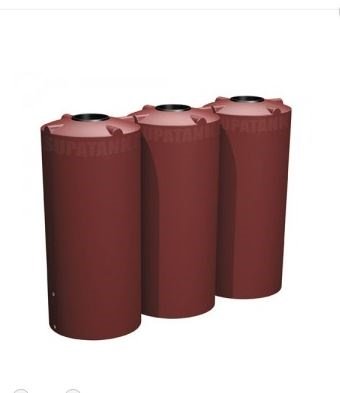Water Storage Tanks
Harvesting Rainwater to Alleviate El Niño Effects
Drought to an Australian farmer, or any farmer for that matter, is a harrowing experience. Dams dry up, snakes are on the move, bush fires become a reality and the death of livestock and crops the inevitable outcome if water-saving measures, like having farm dams or rain water storage tanks are not in place.
It is a reality that water is becoming a scarce resource, and on average, every 3 to 7 years there is a weather pattern of good rainfalls followed by drought. It is important, therefore to invest in rain water harvesting during the good times.
And it is not just Australia that suffers periods of drought, many countries today have been experiencing climate change, manifested through weather-related natural calamities in various stringency and form seen in natural weather disasters of one form, or another. One of these is an extended drought, called El Niño.
El Niño is the drastic change in local temperature and rainfall patterns in isolated regions around the Pacific and elsewhere. It is the kind of weather that no farmer wants to deal with, but it happens, and it cannot be ignored.
This weather abnormality, whilst only occurs at irregular interval, brings devastating effects to farmers and non-farmers, evidently linked to environmental, health and business challenges.
Even if you own a suburban block and grow vegetables in your backyard, if you don't have a water storage tank, or a supply of underground water, you too will be on water restrictions, and you will watch your hard work shriveling up before your eyes. It is heartbreaking, but can be avoided with some thought and planning.

Interconnecting Water Storage Tanks
El Niño Effects
Failure
to respond
to the effects of El Niño can lead to:
Mass migration of birds and other animals beneficial to the growth and survival of other species that heavily relies on wetland vegetation
Scarcity of the water supply in irrigation systems during drought can produce severe crop failure
Due to looming drought cattle, and other herds, including wheat crops are threatened, while others die away.
Insufficient supply of water increases during the dry season as usage restriction is implemented.
Rising temperatures in forests can cause forest/bush fires. In other countries, in the southern hemisphere fire prevention month which falls on the 3rd month of the year is strongly utilised to carry out public awareness.
Electricity bills normally increase during the dry season as generation costs becomes higher due to tight power supply.
Water restrictions in some regions to specific residential/household activities is mandated during El Niño, to give way to other important usage and reduce risk of water supply shortage.
Viruses, protozoa, and bacteria can pollute both groundwater and surface water when rainfall decreases. People who depend on private wells for drinking water are at higher risk for drought-related infectious disease.
Water Shortage is a Global Issue
During
episodes of drought, water plays a vital role in sustaining societal
and biological diversity. However, despite the fact that the earth is
mostly composing of water, a significant percentage of it is seawater
and cannot be readily used when the main supply becomes insufficient.
Seawater desalination may help, but the process of separating salt
from water is costly.
World-wide
irrigation (International Commission on Irrigation and Drainage) uses
a total of 2.7 million gigalitres to produce about 40% of the world’s
food crops. Yet, as the volume of water in dams, river basin, and other
reservoirs
continuously goes down below statistical average during drought, the
conditions surrounding it gradually worsen. Its substantial negative
impact on the overall population progressively intensifies,
especially to agricultural businesses.
Farmers are always worrying that they will one day not have the water needed to continue their livelihood of being able to grow crops and raise livestock in the way that they, and those before them, have done for thousands of years. Water is indeed becoming in short supply and no longer a resource that is available all year round, every year.
Water Storage Tanks Help with the Insufficiency of Water
The
presence of El Niño decreases the amount of rain that falls. In that
regard, cloud seeding, a form of weather modification to induce
rainfall takes place to encourage rainfall. Whilst this process is
essential, there could be other methods out there that are better and
more cost effective.
The
government has recently announced its multi-million water reform
budget for 2014-2015 which aimed to maximize the benefits to both the
environment and the community.
The
fact that this unpredictable weather abnormality produced extreme
warming, the public should recognize the benefits of
using
rainwater tanks during this season.
Although using the rainwater previously stored in water storage tanks has existed in the past, to others it is still in its infancy. Whilst solid awareness becomes the subject for deliberation in some Asian governments, others have already tarted implementing its legislation to try and drought-proof residential and farming businesses.
Based
on the ABS report, 2011-12, on-farm dams
and water storage tanks
account for just 15% of agricultural water (1,315GL).
How to Use your Water Storage Tanks
Although using even the biggest water storage tank of 6000 liters won't be able to fulfil your crops water needs, it will be able to water your vegetables, wash your car, top up the swimming pool, provide water for your livestock, use it for washing your dishes, connect to your washing machine, or even your toilet.
Whatever water you save
will be a bonus. You could
also use this water for drinking purposes if you had to, but it has to
be
well filtered, and even boiled before using.
You will be surprised just
how
much water comes off your roof, and by connecting a water storage
tank to the house, and buying enough tanks to give you water through
the lean times, you will be a lot better off than most of your
friends and neighbors!
Rainwater vs Town Supplied Water
-
Chlorine
Chlorine which exists in treated water can kill constructive plant microorganisms but a disproportionate amount can disrupt a plant’s progression stage.
-
Nitrogen
Further as being free and soft, rainwater has nitrogen which betters your plants and crops' growth.
-
Salt
Salts are naturally contained in soil, but can be drastically washed away with treated water, especially if used to water the plants. Plants need sufficient salt which is found in rainwater to allow it to sustain periods of drought.
-
Prevents erosion
When rainwater is collected, it can keep flooding and soil erosion in low areas.
The
Benefits of using Rain Water Storage Tanks for Irrigation
- The Quality of the Water
- Supply
It is
beneficial to know your
plants water supply requirements (flow rates, volumes, and pressures)
as it will influence the system design and its maintenance, when
water storage tanks are connected to an irrigation system.
For long term
sustainability, farming water systems have to be
profitable, at the same time causing minimal adverse impact to the
environment.
Water storage tanks using
rainwater, although considered as the last resort
and is only utilized when the main water system fails, provides large
scale benefits.
If you are looking for a storage tank supplier, there are a number out there offering similar products. However, make sure you choose one that is right for your needs. We suggest Supatank a company that has a range of tanks, including slimline tanks to save space, and pods that you can also add on and interconnect, so that you are able to double your storage capacity.
Please think about getting some water storage tanks around your property for harvesting rainwater that is so precious in times of drought and extreme weather conditions.
Did you find this page helpful?
Sharing is a way of saying, "Thanks!"







New! Comments
Do you have something of value to add? Leave me a comment in the box below.